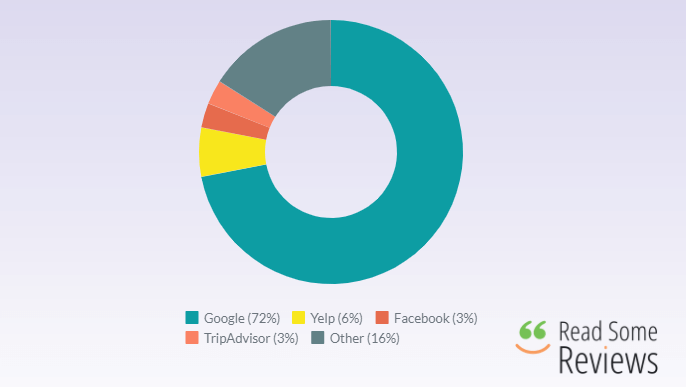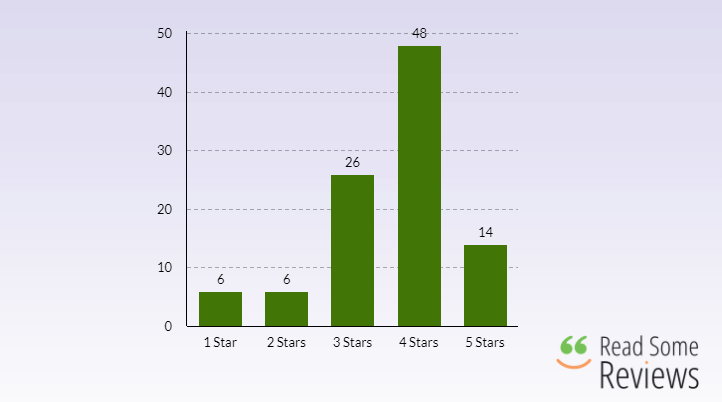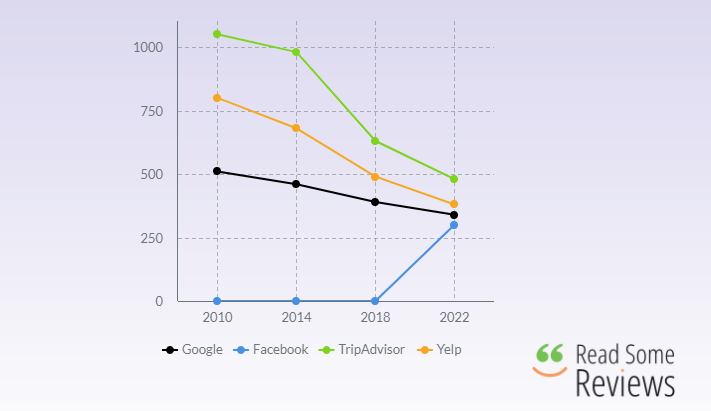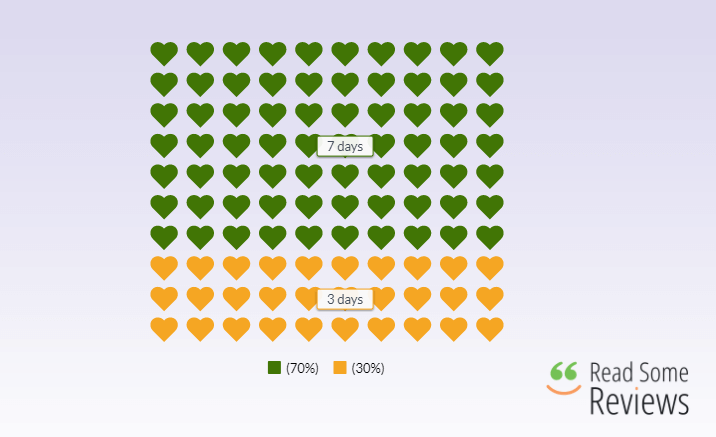Online Reviews Statistics to Know in 2022
Table of contents
- Reviews are used to discover products and services
- Principal Findings and Leading Light Statistics of Online Reviews
- Online Reviews Trends to Watch in 2022
- Final Thoughts
Reviews are used to discover products and services
Review statistics show how people interact with online reviews. Online reviews are used to discover and choose products and services. Review statistics will tell you everything you need to know about the power of social proof.
Consumers now rely on local business listings to research and validate their purchase decisions, making local listing management a top priority for small businesses. And consumers are more careful and discerning than ever about where they go and what they buy, primarily due to growing awareness of brands’ safety practices and pandemic-preparedness plans.
Reviews can bolster consumer confidence in uncertain times. As a result, good reviews for leading companies can lead to new business opportunities. In contrast, bad reviews for lesser-known companies can cause customers to shy away from those companies and buy from their more well-known competitors.
Principal Findings and Leading Light Statistics of Online Reviews
- 84% of all reviews originate from only 4 sites, making it necessary to focus on key directories with high domain authority and influence consumer opinions.
According to reviews analysis by Google, four sites—Google, Yelp, Facebook, and TripAdvisor—are responsible for distributing 84% of all online reviews. After Google (72%), Yelp (6%), Facebook (3%), and TripAdvisor (3%) follow suit, reviews can boost or blunt consumer decisions, so only a few sites also host advertisers. 75% of new businesses acknowledge that they depend on a handful of business review sites and directories, most notably Google, Facebook, Yelp, TripAdvisor, Apple Maps, and Bing Maps.
The findings of the statistics of the online reviews have clear implications for local listing management. The narrative around such listings has changed recently, shifting from listing consistency to generating a positive reputation through customer reviews.
Rather than vying for a spot on every directory site, marketers should focus their investment priorities on managing top-tier directories that influence buyers and hold domain authority.
When deploying local listing management solutions, enterprise brands, brands with a broad outreach, and agencies must consider this. The long tail of local directories doesn’t provide as valuable a return as it used to. Instead, flags should be planted on the top sites—and investment should go toward understanding the digital properties consumers frequent rather than getting one more supported directory.

- Google remains the most-visited review site, with 62% of users zero-clicking to access reviews of local businesses and retailers.
According to a BrightLocal study, 63% of consumers use the Google search engine to track down reviews about a company. Another 54% use Facebook, and 32% say they use Yelp. The average local business on Google has about 39 reviews. This number varies drastically between industries. For instance, hotels are more likely to have an average of 309 reviews. Yelp ranks second, with a rating of 45.18%, followed by TripAdvisor (44.71%) and Facebook (44.47%).
In a bid to increase review-driven traffic, 65% of Google searches in 2020 were zero-click searches owned by Google’s reviews index. Since Google shows review snippets and star ratings in search results without sending users to third-party sites, it effectively cut in line ahead of other websites in the online reviews space.
- As evidence of consumers’ heightened sensitivity about where to go or what to purchase in the wake of the pandemic, interactions with review-related websites have risen 53% compared to pre-pandemic levels.
According to third-party industry research, consumer interaction with reviews has increased by 50% from pre-pandemic levels. Consumers show heightened sensitivity toward where they go, what they buy, and which businesses support health initiatives.
Top review sites (Google, Yelp, Facebook, TripAdvisor) allow users to generate content about and rate brands. It aids the customer experience and facilitates users’ paths to purchase. It means that brands cannot control what these internet-based outlets provide information. However, they can ensure that their knowledge on these sites is accurate when they take the time to give feedback or corrections to misinformation.
Marketers should heed local search engine optimization best practices and ensure that business information is kept up to date on authoritative sites where their business locations are listed. Reviewers complain about inaccurate website information, such as hours of operation listed online that don’t reflect the actual hours.
- Companies with lower than four-star ratings are often filtered out of search results on review sites.
Online ratings can be crucial in helping consumers find businesses that satisfy their needs. Recent studies have found that up to 70% of customers use online ratings as a tool when searching for companies.
Customers favor businesses with a minimum rating of 4 stars and higher, so if your company’s average rating is below 4 stars, you could miss out on hundreds or thousands of potential customers. But people are not always looking for perfection — they want honest and authentic feedback.
Therefore, bad reviews and ratings are essential in consumers’ research and decision-making.

- Reviews are now as short as an expanded tweet, a structural change that reflects changing consumer expectations.
First, what people consider a “review” has changed. Reviews are getting shorter for 65% by 2022. A few years ago, multiple-paragraph reviews were common, but most thoughts are pretty short today. In earlier years, customers submitted paragraphs of text up to 800 words to websites that hosted the content in question: for example, Yelp and TripAdvisor. Nowadays this length is about 350 words.
Since Google and Facebook introduced review platforms for the goods and services they offer, customers can now post their feedback more efficiently. It has led to a decline in the amount of detail that reviews contain an increased number of rating systems used. Sites such as Facebook Reviews have implemented simple rating systems which allow people to give a thumbs-up/thumbs-down assessment of every business with one click.

- Reviews written by consumers who discuss the product’s value tend to contain more criticism than reviews describing other aspects of their experience at the business.
Companies were evaluated primarily based on their products and services in the past. In the present day, however, customer experience has become a key determinant of businesses’ success, and consumers assess companies based on specific aspects of the customer experience, such as product, service, location, and value. Customer reviews that focus on value tend to be more critical than reviews that focus on other sides of the customer experience (product, service, location). Value, in particular—how customers perceive and demand it—offers a telling sign that consumer behavior has grown even more nuanced since COVID.
Customer experience analytics data show that legal services, real estate, education, and financial services businesses are among the four industries whose brands fail to meet customer expectations for delivering high-value products at a reasonable price.
Customer reviews, whether positive or negative, show that online reviews of industry leaders vary by industry: Positive sentiment is highest among service-based reviews (reviews that talk about service), with the highest percentages ranging from 81% to 95% depending on the industry. Even market leaders are not exempt from this trend. Some of the lowest positive reviews were found in value-based reviews (reviews that talk about value).
- Customers expect a response within a week. One in three customers expects a response within three days or less.
Reviews provide an opportunity for consumers to share their experiences with both fellow customers and businesses. Companies need to respond to both positive and negative feedback. Here’s why: a study showed that businesses that responded to reviews experienced better business performance than those that did not respond.
Nine out of ten consumers will avoid a business with negative reviews. The majority of people expect companies to respond to negative reviews within a week. One in three want businesses to respond quickly in 3 days or less. 63% percent of reviewers said that at least one company they reviewed did not respond to them.
Industry analysts contend that the pandemic accelerated these trends, with managers doing line-staff duties while companies were operating with a limited workforce.
Most businesses that get positive reviews from their customers respond by thanking them and inviting them to return in the future. Meanwhile, companies that receive negative reviews often thank the customer for sharing their thoughts about the business and ask for more information about the complaint.
Most companies also include service checklists, customer experience management tools, and details about why and how to contact them.

- Those in the industry who are responsive to customer feedback get better ratings, and faster review responses are linked to having a positive reputation.
Responding quickly to customer reviews improves the likelihood of getting higher ratings. Reviewers are more likely to return and purchase from a brand whose representative responds in a timely fashion.
Online Reviews Trends to Watch in 2022
Statistics suggest that an increase in the popularity of online reviews will continue.
Reviews with an average of 4.2 to 4.5 stars out of 5 most influence purchases.
Online reviews and social media can provide valuable insights into how your business can improve, but they also help maintain a sense of authenticity and transparency.
Northwestern University researchers found that purchasers are most likely to buy products with 4.2–4.5 star ratings, on average — a rating range that makes this the best star rating for purchase probability.
Positive and negative reviews help your readers trust your brand.
According to the Google help article “Customer Feedback: Numerical Ratings and Reviews on Google Business Profiles,” customers are more likely to trust a mix of positive and negative reviews.
Reviews help potential customers make informed decisions about where to shop. If a review isn’t honest or objective, authors can respond and provide additional information to help customers make educated purchasing decisions. If the review breaks posting guidelines, authors can request that it be removed from the page.
It will provide businesses with another tool to combat their fears about getting bad reviews. It also emphasizes the importance of reviews and of getting people viewers can trust and are inspired to follow, like real customers.
Review quantity impacts business revenue.
A Search Engine Land report found that businesses with more reviews generate 54% more revenue. Those with above-average review quantity bring in 82% more in annual income than businesses with below-average review quantity.
It is known that the number of reviews, rather than the average rating, is more strongly correlated to revenue performance.
Consumers won’t buy from brands that censor reviews.
In a study conducted by Trustpilot, 62% of consumers reported not supporting companies that actively censored negative reviews.
Business owners must be aware of the public’s demand for authentic and transparent reviews. It means avoiding manipulating reviews, purchasing fake reviews, and censoring negative reviews.
Final Thoughts
The statistics and trends highlighted above demonstrate the importance of adapting to evolving customer needs in today’s post-pandemic setting. As companies navigate an increasingly complex market, they must balance online reviews with their customers’ lifestyles.
The more positive the reviews of your business have been and the closer together in time they were posted, the greater your chances of attaining conversions.
Reviews play a big part in people’s buying decisions, so you must respond to them. You can improve customer opinion and sentiment toward your brand and rectify any service problems by doing so.